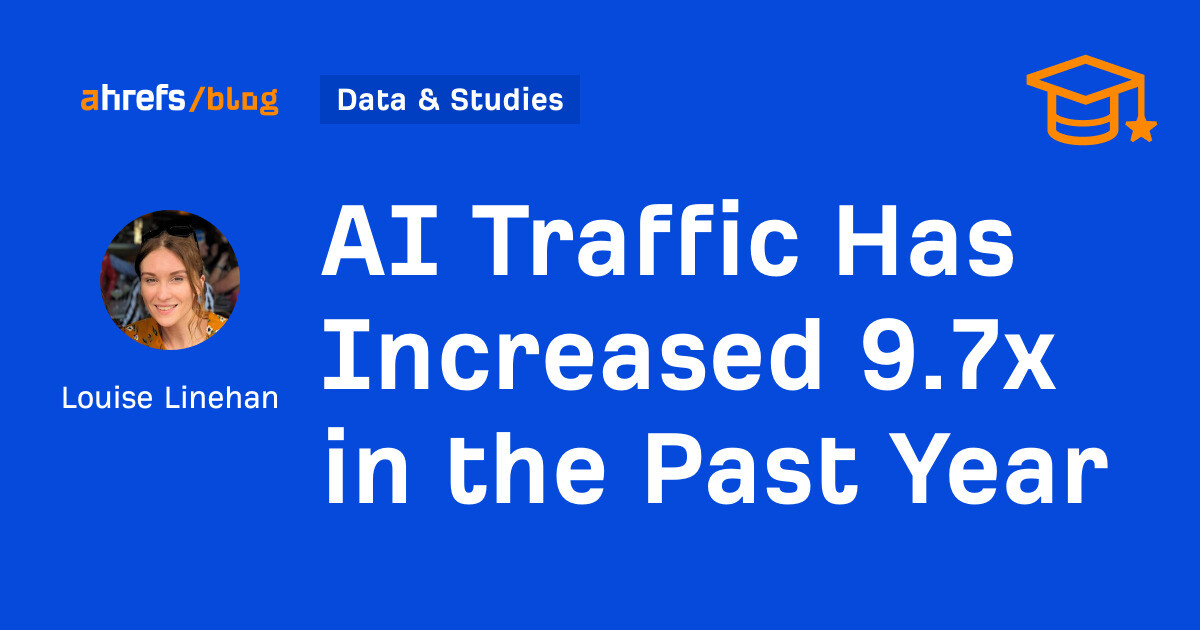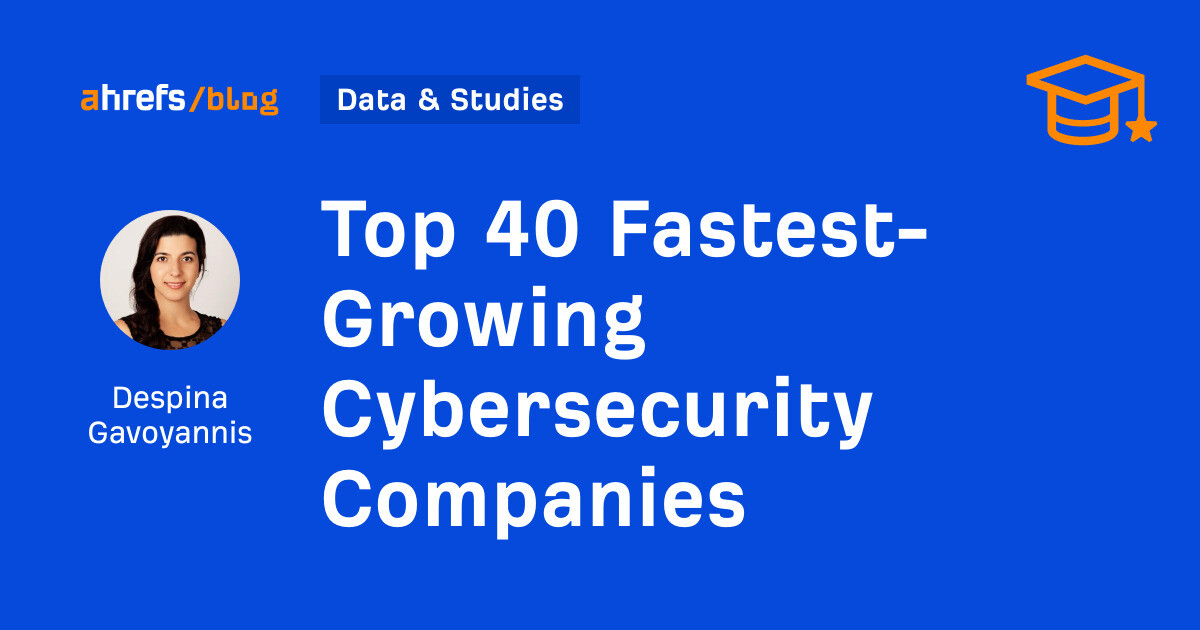SaaS SEO: How to Build a Winning SEO Strategy for Your SaaS Business
With at least 70% of leading B2B (business to business) buyers kicking off their search for the best companies to buy from with a search query on Google or other search engines The post SaaS SEO: How to Build...

The global market share of SaaS companies has grown from 206 billion USD in 2023 to 295.08 billion USD in 2025. That’s a massive growth in just 2 years.
However, to grab a big piece of this pie, you need to compete with 16.6K SaaS brands in the US. The worldwide count of SaaS companies shoots up to a whopping 42,000.
Given these numbers, the question is how do you attract more clients for your SaaS business and boost revenue amid this aggressive competition? SaaS SEO is your golden ticket.
An effective SaaS SEO strategy empowers your business with enhanced online visibility, allowing your potential clients to discover your SaaS company faster online.
More visibility brings more leads and more revenue. That’s how the magic unfolds.
In this blog, I’ll tell you how to implement SEO for SaaS effectively and see your conversions and profits skyrocket like never before.
What is SaaS SEO?
SaaS SEO is the process of optimizing your software-as-a-service website to rank higher in search results to attract potential customers, and convert them into your clients.
It involves implementing various SEO strategies, including keyword research, content creation, technical SEO, link building and more, tailored to SaaS companies.
For both B2C and B2B SaaS, SEO comes in handy to build trust and authority, magnetize qualified leads and boost ROI.
Here’s the proof. Using our customized SaaS SEO strategies, Casepoint, one of our SaaS clients, increased their Domain Authority score from 28 to 45.
You can achieve similar results too, if you use the right SaaS SEO strategies.
Why SaaS Businesses Need SEO
Here’s why SEO is a must-have for your SaaS business.
Increased Organic Traffic
Organic visitors to your website ultimately convert into clients purchasing your SaaS product. SEO helps drive more people to your website by boosting your online visibility.
With a solid SEO strategy, you can generate consistent organic traffic by attracting users actively searching for SaaS solutions like yours.
Enhanced Brand Awareness
SEO offers your SaaS brand more online visibility.
The more frequently your brand appears in searches, the more familiar it becomes among your target audience. This way, SEO helps build a positive brand image for your SaaS products.
Exponential Business Growth
SaaS businesses typically sell long-term solutions.
SEO helps SaaS companies nurture leads effectively and convert them into profitable clients. A consistent traffic flow and increased conversion rates lead to a significant growth of your SaaS brand.
Reduced Customer Acquisition Costs
Cost-cutting on customer acquisition can help reduce overhead expenses.
SEO significantly reduces customer acquisition costs by attracting inbound leads to your SaaS website organically, without any ad spend.
Did you notice the “sponsored” tag in the above Google Search results? It denotes that these results have gained the spot using PPC campaigns. These sites pay Google every time a user clicks on these results. That’s more money going out of their pockets.
With SaaS SEO, your website gets ranked on Google without these additional expenses.
How SaaS SEO Differs from Traditional SEO
Unlike many other businesses that leverage traditional SEO, SaaS brands need a tailored SaaS SEO approach to trigger specific results. Here’s how SaaS SEO is different from traditional SEO.
SaaS SEO isn’t just about attracting traffic. It targets people who exhibit high chances of converting into trial users and long-term customers.
As SaaS businesses target long-term sales, the SaaS SEO strategy nurtures leads throughout the buyer’s journey using powerful content strategies, such as industry-specific articles and case studies leading to free product demos and sign-ups, to convince users to buy SaaS solutions.
SaaS SEO Strategies for Business Growth in 2025
Let’s discuss the SaaS SEO strategies for 2025.
1. Set SaaS-Specific KPIs
Your SaaS business has specific reasons to invest in SEO. It can be anything including boosting brand awareness, educating your target audience about your SaaS solutions, getting qualified leads, lowering customer acquisition costs or increasing your profits.
Defining key performance indicators allows you to track the performance of your SaaS SEO campaign. This way, you can ensure that your SEO efforts are driving these results for your SaaS company.
Here’s a snapshot of the most common metrics to measure SaaS SEO performance.
Organic Traffic: Track how many visitors come from search engines. Domain Authority: Check how authoritative your SaaS brand is. Keyword Rankings: Monitor search terms for which your website appears in organic search results Organic CTR (Click-Through Rate): Know how many people click on your SaaS website in search results. Organic Traffic Value: Get transparency into the revenue your website generates from organic traffic. Organic Conversions: Monitor sign-ups, demo requests, or purchases from organic visitors.2. Identify Buyer Personas
Once you set KPIs, you should pinpoint potential customers you are going to target to achieve those KPIs. That’s why creating buyer personas is important.
Suppose you are selling a SaaS-based food delivery app. In this case, your buyer personas will include restaurant owners, food delivery aggregators, delivery executives and their end customers.
Identifying buyer personas allows you to create content that aligns with their search intent, addresses their pain points, suggests solutions and guides them through the buyer’s journey. Ultimately, they end up buying your SaaS product. That’s the point.
3. Perform SaaS Keyword Research
Conducting targeted keyword research is key to identifying search terms people are using to find answers for queries they have related to your industry.
When it comes to keyword research for SaaS, you need to understand the marketing funnel stages in the first place. That’s how you will be able to target the right keywords for each stage, which is super important for increasing conversions for your SaaS business.
The marketing funnel includes three stages, each describing the steps in a buyer’s journey.
They include:
Top of the Funnel (ToFu): This is the awareness stage where people become aware of a problem and look for information to solve it. (Blogs, FAQs etc..) Middle of the Funnel (MoFu): This is the consideration stage where users start looking for specific solutions to solve the problem in question. (Case studies, white papers etc..) Bottom of the Funnel (BoFu): This is the decision-making stage where users make the final call about purchasing your product. (customer testimonials, product demo, free trial etc..)Let me give you an example.
Let’s say you sell SaaS delivery management software.
Suppose a logistics company struggles with delayed deliveries due to inefficient routing. They are in the awareness stage and start searching using queries like “How to improve logistics delivery efficiency” or “How to avoid inefficient routing”. Blogs and FAQs addressing this problem can provide the information they need and suggest using a delivery management software as the solution.
In the consideration stage, the logistics company starts looking for the best delivery management software solutions in the market. Now, showing them a case study about how your SaaS delivery management software solved similar problems, for example, can prompt them to count on you as one of the best vendors.
In the decision making stage, showing them positive customer reviews or encouraging them to book a free demo and use a free trial of your SaaS product can convince them to sign-up for your product and become your customer.
Start your keyword research with that understanding of the conversion funnel. You can use tools like Ahrefs or Semrush to identify keywords related to your SaaS business.
Again, when you choose keywords to target for your SaaS business, ensure they align with the stages of the buyer’s journey and match the search intent of the users in specific stages of the conversion funnel. That’s how you will be able to attract the right prospects.
4. Analyze Competitor Strategies
What if I told you your competitors can help you create a winning SaaS SEO strategy? Yes. This can be a reality if you know where to tap.
Keep an eye on your competitors’ keyword and backlink strategies using SEO tools like Ahrefs and Semrush.
This is, indeed, a SaaS SEO strategy we leveraged to drive results for Casepoint.
This can work for your SaaS website as well.
Watch your competitors to find out what they have that you don’t, especially in terms of keyword rankings and backlinks. Reverse engineer those SEO opportunities to outperform them and rank higher in Search.
This can boost the online visibility of your SaaS website and bring new sales opportunities your way.
5. Create Helpful SaaS Content to Address Customer Pain Points
Creating high-quality, user-engaging content helps you build authority while ranking for relevant keywords.
This is particularly important for SaaS. Here’s why.
To get people to buy your SaaS product, you should win their trust in the first place. Great content helps you make it happen.
Plus, with Google’s infinite love for content that adds value to users, creating high-quality, informative SaaS content helps you boost your website’s authority and position yourself as a trusted source of information in your industry.
Informational intent keywords are your secret ingredient for producing content that delivers value while exhibiting your industry expertise.
Take Casepoint for example. They rank on Google’s first page for a majority of informational intent-based keywords. That’s certainly one of the drives behind their authority boost.
Your content can be anything, including blogs, FAQs, infographics, practical tips and insights and more, that educates your audience. Include statistics, data and relevant examples to maintain content uniqueness and deliver value to your visitors.
Make sure you use relevant keywords naturally in your title tags, headings, URLs, meta tags and main content.
Additionally, add clear and compelling CTAs that encourage your visitors to take specific action like signing up for your SaaS product or booking a demo call.
6. Optimize SaaS Product and Feature Landing Pages
SaaS product and feature pages are your high-value landing pages. They provide your visitors insights into your SaaS product’s unique selling points.
People who visit landing pages like these are often already aware of the benefits of the particular SaaS product for their business. They are just a step away from purchasing your SaaS product and becoming your customers.
However, to attract the right prospects to your commercial landing pages, you need to make sure that you target appropriate commercial and transactional intent keywords.
This is a highly recommended SaaS SEO strategy. We saw this strategy work for Casepoint. For commercial and transactional intent keywords, their money pages are ranking on Google’s first page.
When you rank for these keywords, you will be able to drive traffic that has a pretty high chance of converting into sales.
Sprinkle the chosen commercial and transactional intent keywords naturally into your landing page content. Include CTAs across the landing page to boost conversions significantly.
7. Maintain a Technically Healthy SaaS Website
Technical SEO is a must for SaaS websites, especially because they have a complex site structure.
One, people hate slow-loading websites. Boost your SaaS website’s loading speed by optimizing your images, minifying JavaScript and CSS files and enabling browser caching.
Two, both users and Google prefer mobile-friendly websites. Make your website mobile-friendly by using a responsive page design, reducing intrusive pop-ups and making links and CTA buttons easily clickable on mobile devices.
Third, security is essential for SaaS websites, especially because they handle user data. Plus, SSL is good for SEO too. Install an SSL certificate to encrypt data and protect against potential security breaches and bolster SEO.
Last but not least, a robust internal linking strategy boosts user engagement and SEO alike. Link relevant informational content like blogs to high-value pages like product landing pages and sign up or demo pages to boost conversions.
We’ve implemented many of these technical SEO strategies firsthand for Casepoint. We optimized media files and enabled features like lazy loading to reduce page load times and ensure a smooth mobile experience.
As you can see in the screenshot below, our efforts resulted in a positive SEO performance.
We also built a strong internal linking structure for easier navigation, crawlability and improved SEO performance.
8. Build High-Quality SaaS Backlinks
Backlinks are endorsements from other relevant sites to your SaaS website. Building high-quality backlinks is a kickass strategy for SaaS because these links drive targeted referral traffic to your website. That’s exactly what you want to trigger high-value conversions.
In fact, consistent link building from high-DA websites is one of the strategies we implemented for Casepoint to boost conversions.
Look at the referring domains (websites linking back to Casepoint) steadily going up for months together.
Guest blogging, resource page link building and directory link building are some of the proven SaaS link building strategies.
Check out our dedicated SaaS link building guide to discover more link building strategies for SaaS websites.
The success of your SaaS SEO campaigns rely heavily on the strategies you choose and how effectively you implement them. Ensure your SEO for SaaS is just right for your business.Need help building a customized SaaS SEO strategy for your brand to maximize results? Book your free SEO consultation with our seasoned SaaS SEO experts.

 Tekef
Tekef 





































